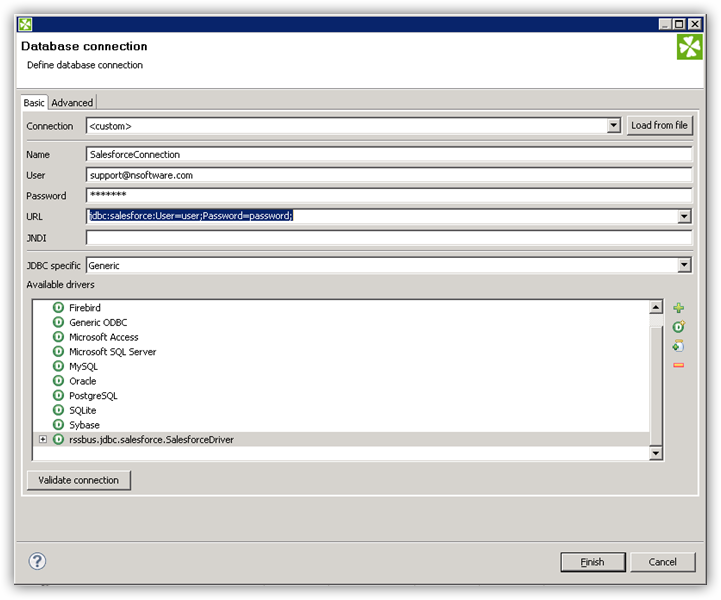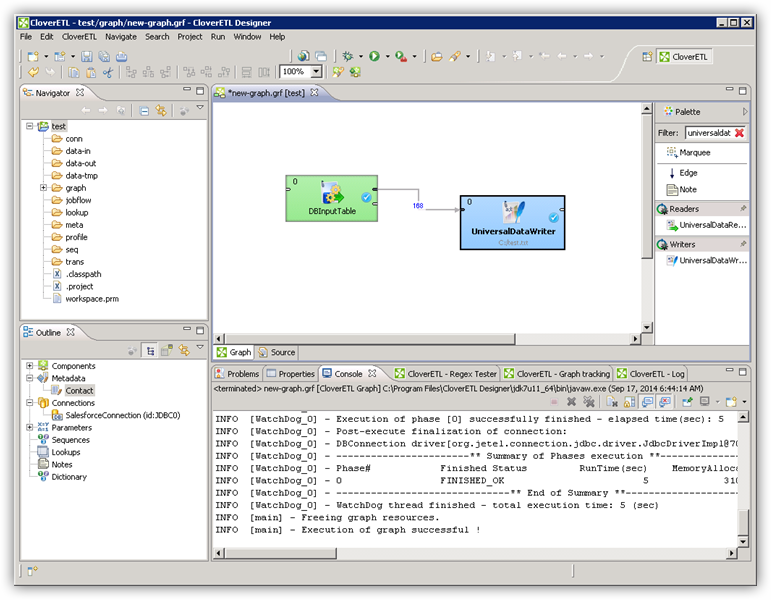Discover how a bimodal integration strategy can address the major data management challenges facing your organization today.
Get the Report →Connect to Azure Data Lake Storage Data in CloverDX (formerly CloverETL)
Transfer Azure Data Lake Storage data using the visual workflow in the CloverDX data integration tool.
The CData JDBC Driver for Azure Data Lake Storage enables you to use the data transformation components in CloverDX (formerly CloverETL) to work with Azure Data Lake Storage as sources. In this article, you will use the JDBC Driver for Azure Data Lake Storage to set up a simple transfer into a flat file. The CData JDBC Driver for Azure Data Lake Storage enables you to use the data transformation components in CloverDX (formerly CloverETL) to work with Azure Data Lake Storage as sources. In this article, you will use the JDBC Driver for Azure Data Lake Storage to set up a simple transfer into a flat file.
Connect to Azure Data Lake Storage as a JDBC Data Source
- Create the connection to Azure Data Lake Storage data. In a new CloverDX graph, right-click the Connections node in the Outline pane and click Connections -> Create Connection. The Database Connection wizard is displayed.
- Click the plus icon to load a driver from a JAR. Browse to the lib subfolder of the installation directory and select the cdata.jdbc.adls.jar file.
- Enter the JDBC URL.
Authenticating to a Gen 1 DataLakeStore Account
Gen 1 uses OAuth 2.0 in Azure AD for authentication.
For this, an Active Directory web application is required. You can create one as follows:
To authenticate against a Gen 1 DataLakeStore account, the following properties are required:
- Schema: Set this to ADLSGen1.
- Account: Set this to the name of the account.
- OAuthClientId: Set this to the application Id of the app you created.
- OAuthClientSecret: Set this to the key generated for the app you created.
- TenantId: Set this to the tenant Id. See the property for more information on how to acquire this.
- Directory: Set this to the path which will be used to store the replicated file. If not specified, the root directory will be used.
Authenticating to a Gen 2 DataLakeStore Account
To authenticate against a Gen 2 DataLakeStore account, the following properties are required:
- Schema: Set this to ADLSGen2.
- Account: Set this to the name of the account.
- FileSystem: Set this to the file system which will be used for this account.
- AccessKey: Set this to the access key which will be used to authenticate the calls to the API. See the property for more information on how to acquire this.
- Directory: Set this to the path which will be used to store the replicated file. If not specified, the root directory will be used.
Built-in Connection String Designer
For assistance in constructing the JDBC URL, use the connection string designer built into the Azure Data Lake Storage JDBC Driver. Either double-click the JAR file or execute the jar file from the command-line.
java -jar cdata.jdbc.adls.jarFill in the connection properties and copy the connection string to the clipboard.
![Using the built-in connection string designer to generate a JDBC URL (Salesforce is shown.)]()
A typical JDBC URL is below:
jdbc:adls:Schema=ADLSGen2;Account=myAccount;FileSystem=myFileSystem;AccessKey=myAccessKey;InitiateOAuth=GETANDREFRESH

Query Azure Data Lake Storage Data with the DBInputTable Component
- Drag a DBInputTable from the Readers selection of the Palette onto the job flow and double-click it to open the configuration editor.
- In the DB connection property, select the Azure Data Lake Storage JDBC data source from the drop-down menu.
- Enter the SQL query. For example:
SELECT FullPath, Permission FROM Resources WHERE Type = 'FILE'
Write the Output of the Query to a UniversalDataWriter
- Drag a UniversalDataWriter from the Writers selection onto the jobflow.
- Double-click the UniversalDataWriter to open the configuration editor and add a file URL.
- Right-click the DBInputTable and then click Extract Metadata.
- Connect the output port of the DBInputTable to the UniversalDataWriter.
- In the resulting Select Metadata menu for the UniversalDataWriter, choose the Resources table. (You can also open this menu by right-clicking the input port for the UniversalDataWriter.)
- Click Run to write to the file.








